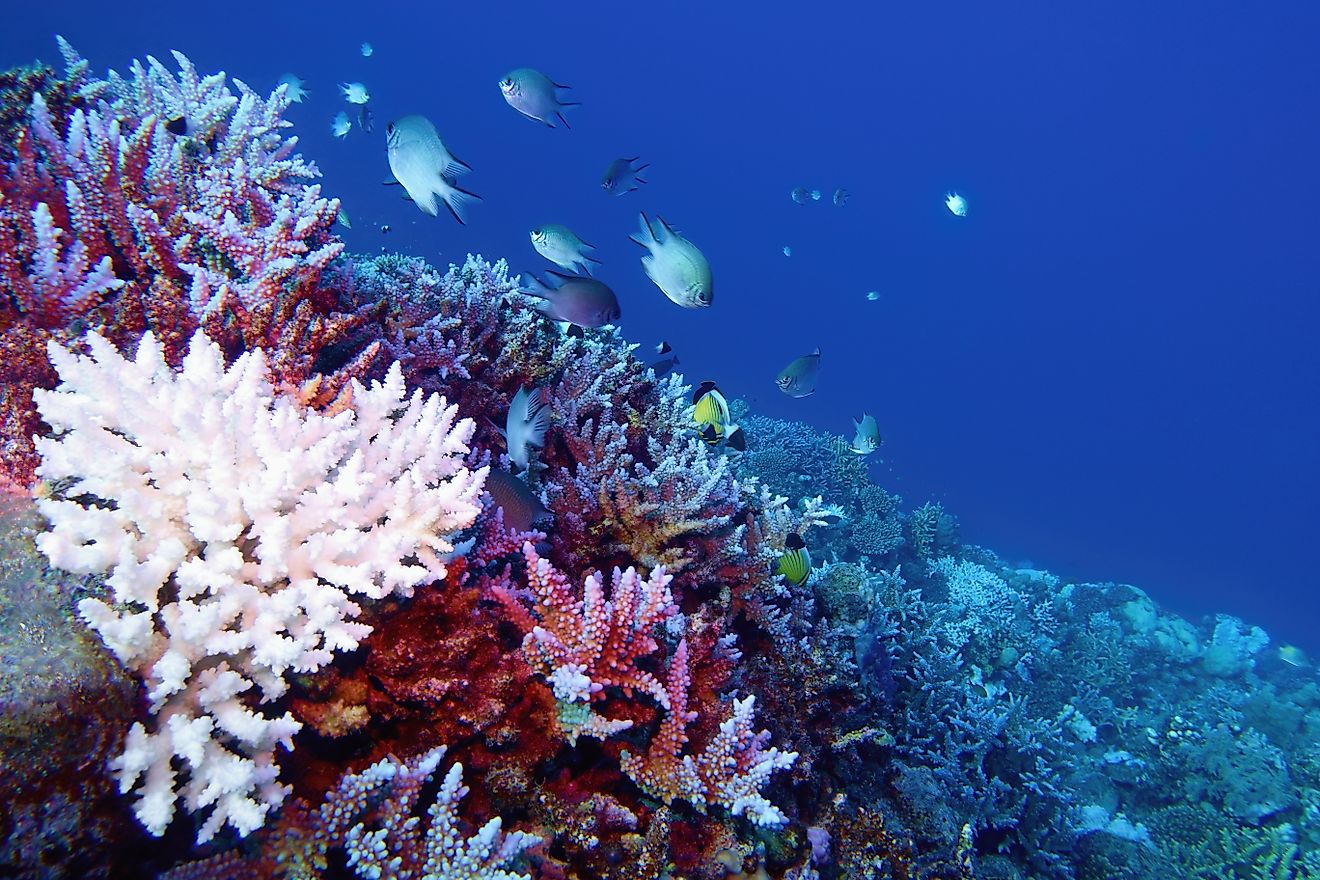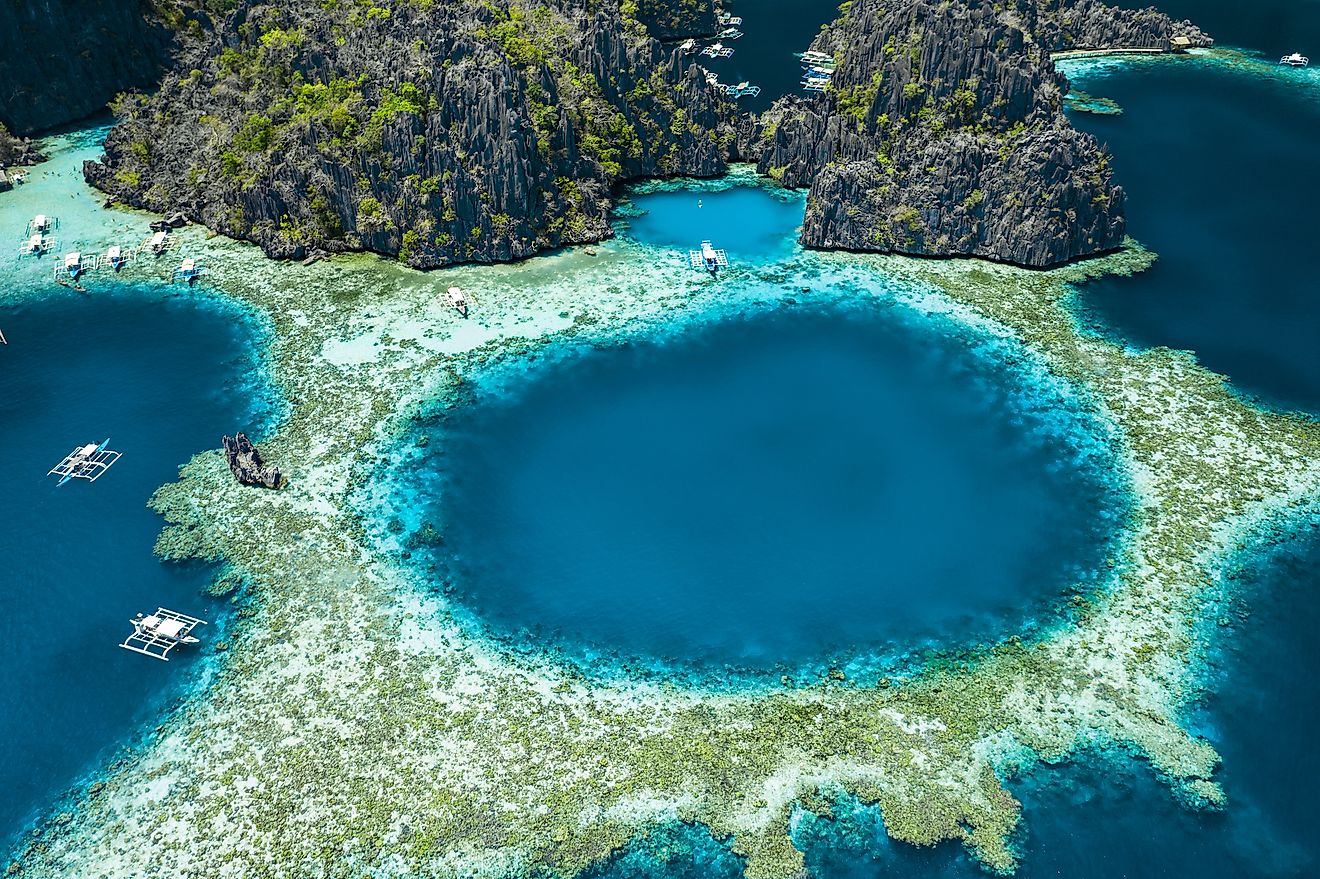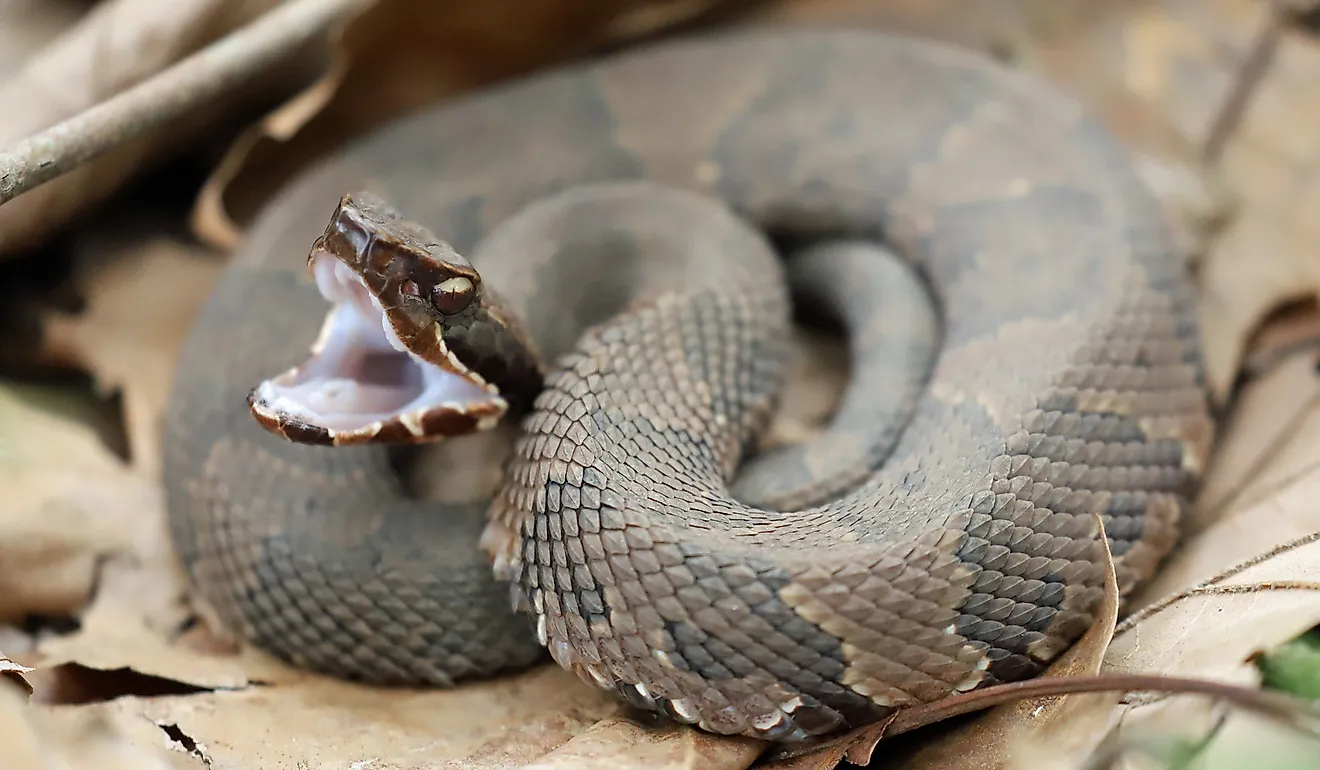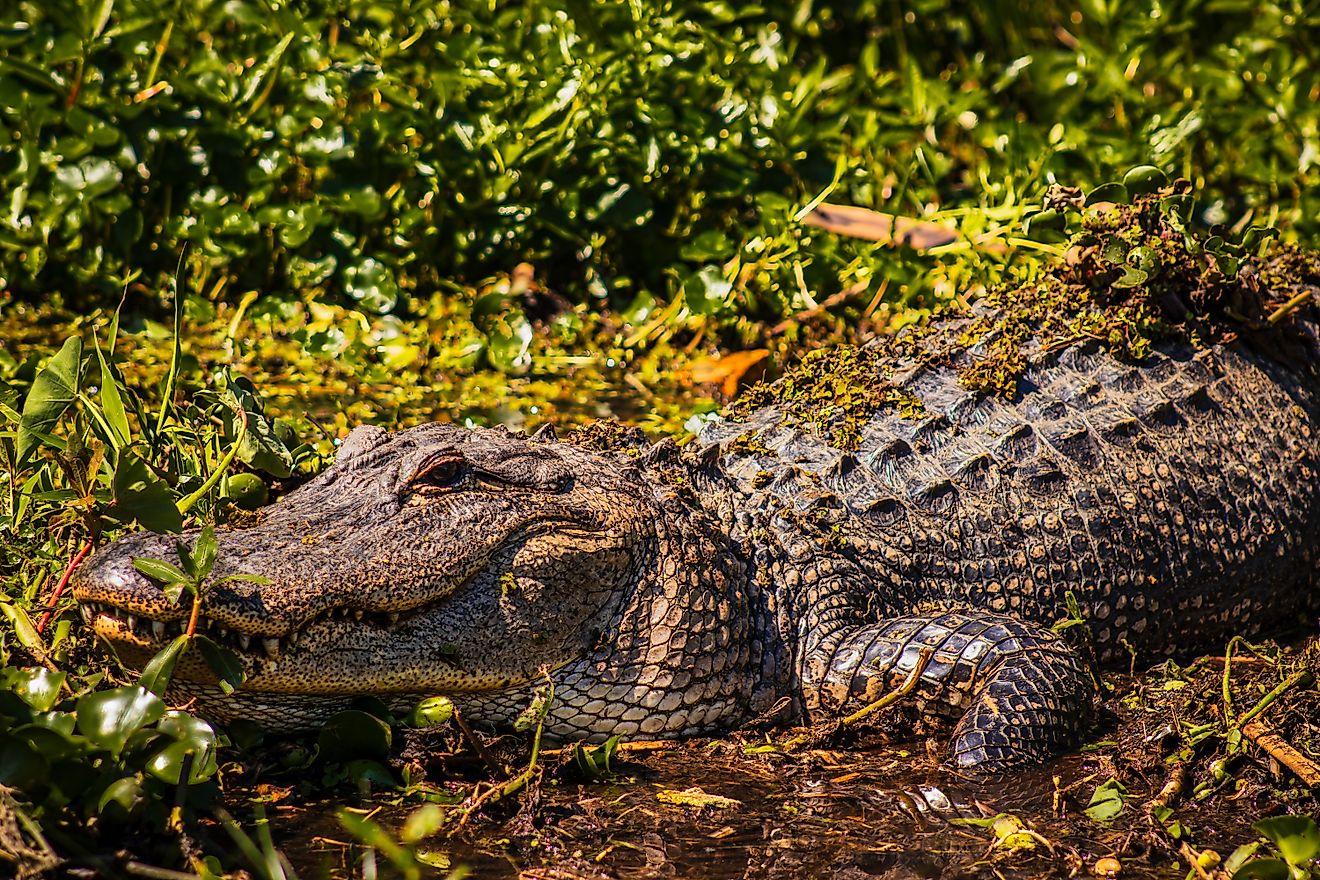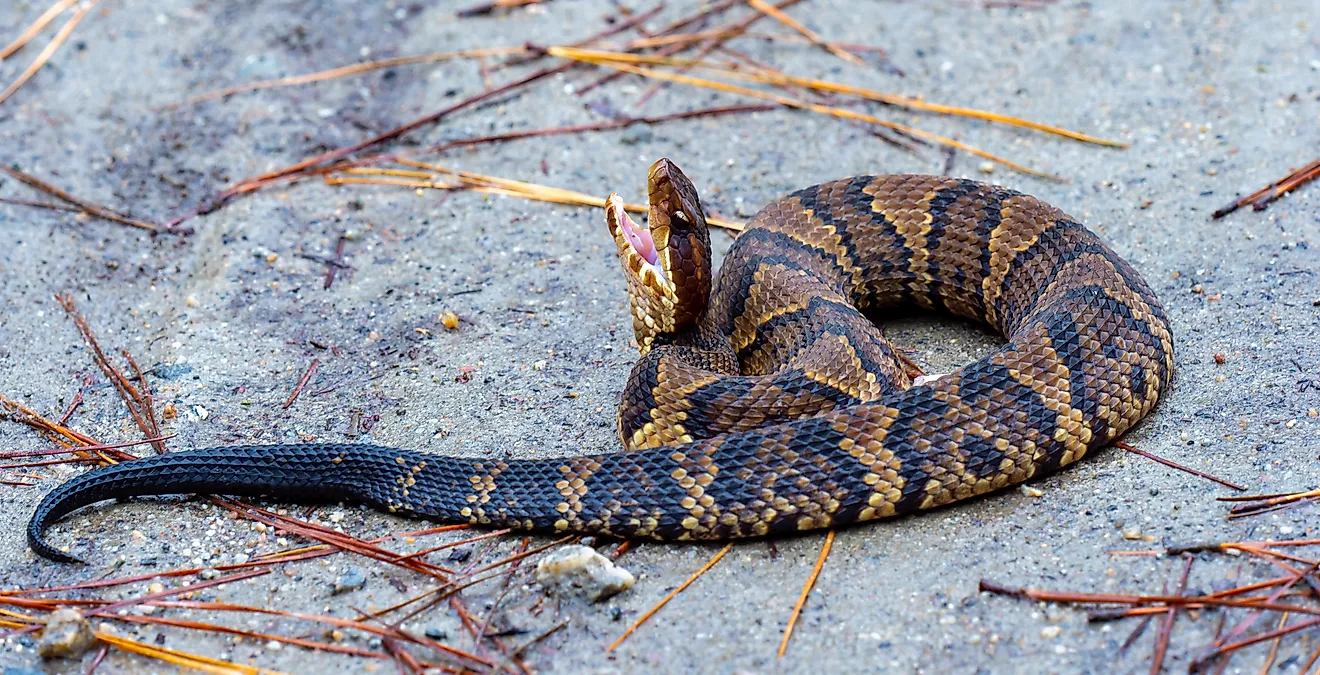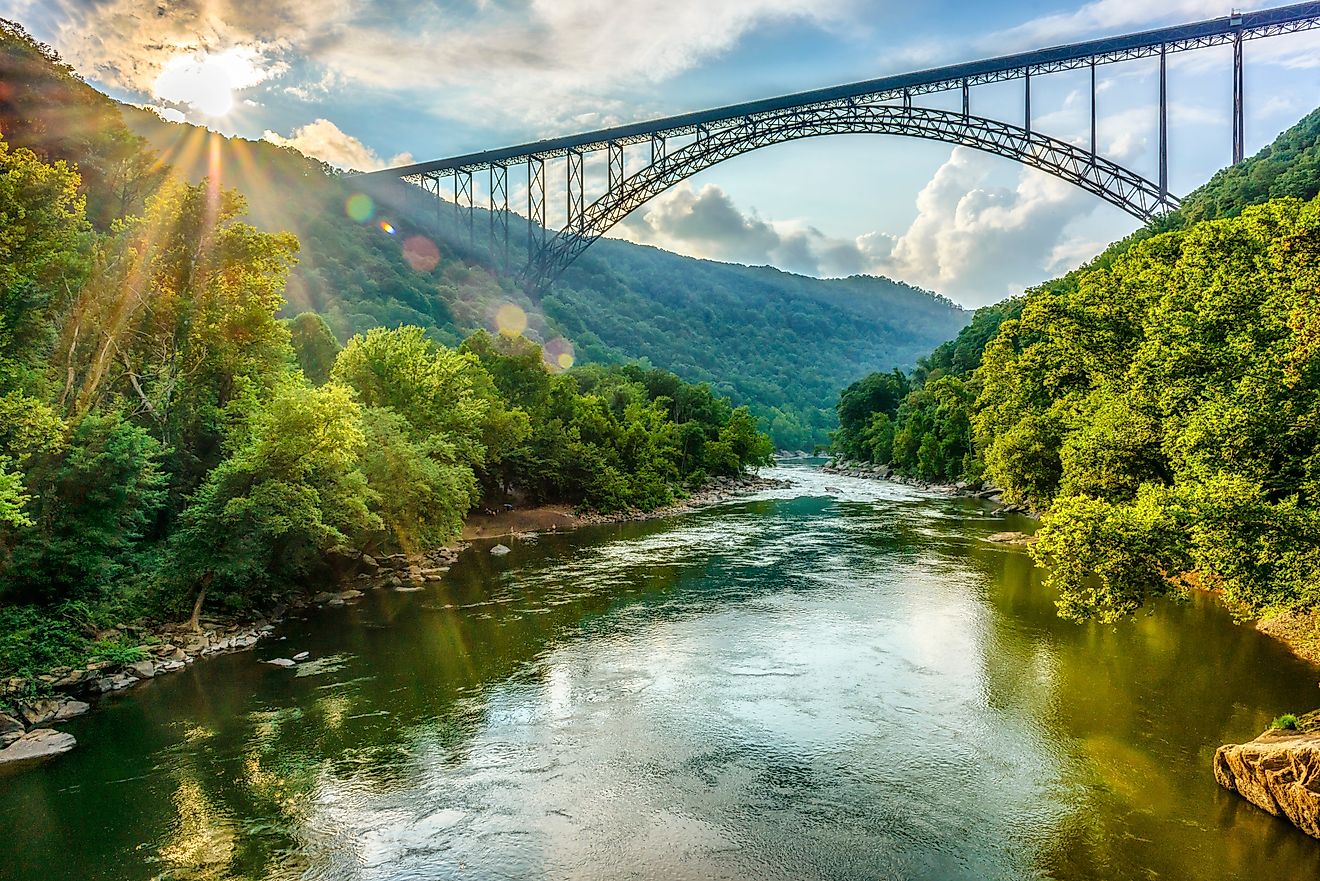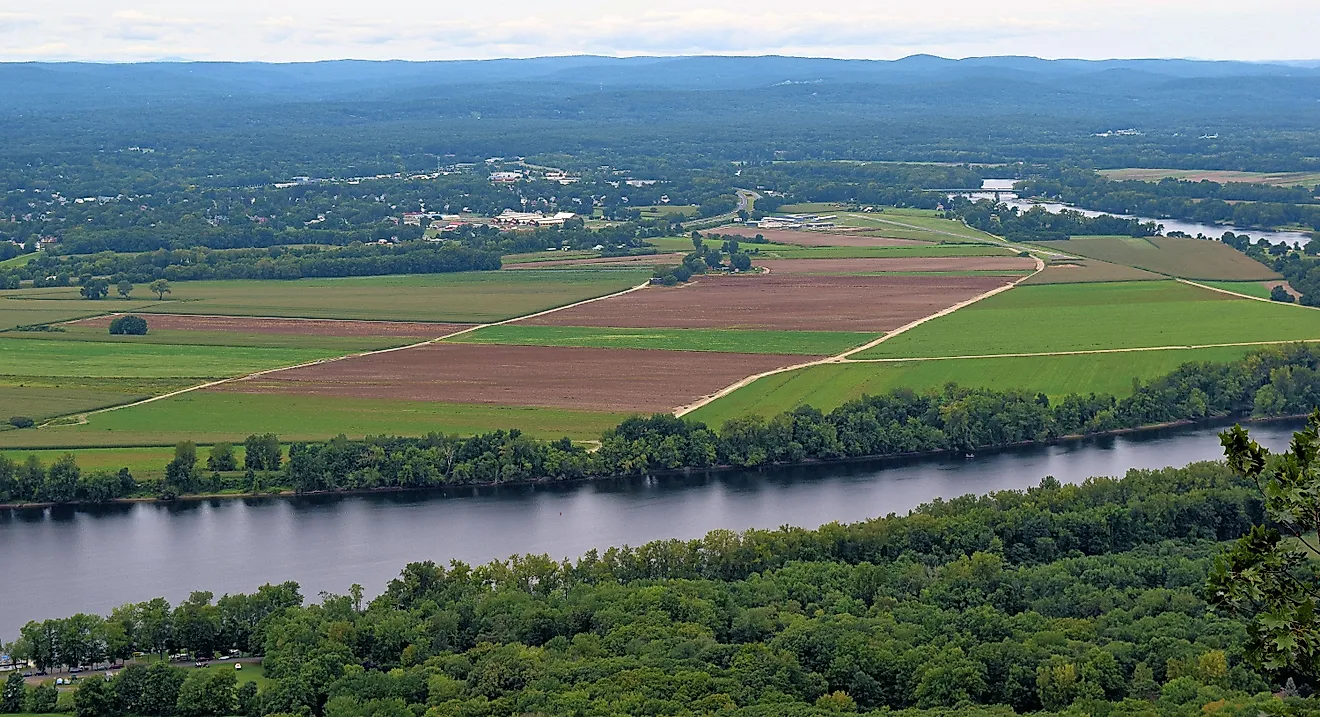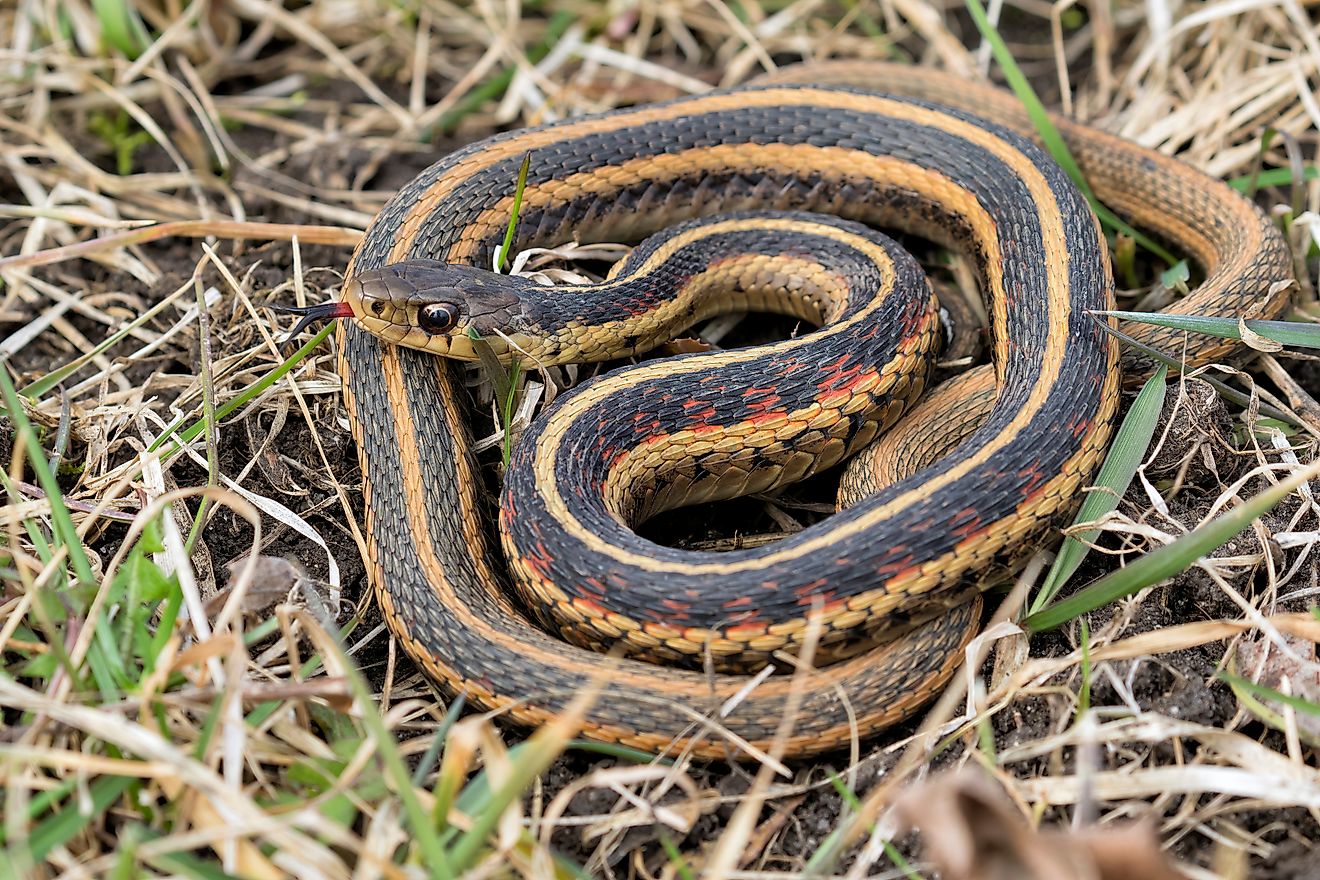
5 Of The Most Snake Infested Rivers In Arkansas
The United States is home to 140 species of snake, 36 of which are native to Arkansas. Snakes have adapted to live in a variety of habitats all over the world, including rivers. Arkansas is rich in waterways; for example, the Mississippi River forms the eastern border of the state and serves as a major trade corridor, connecting to ports in the Gulf of Mexico. Arkansas has approximately 82,366 miles of river for its snakes to call home, and the Arkansas River is the sixth-largest river in the United States. Some rivers are infested with snakes.
Arkansas River

The Arkansas River rises in the Sawatch Range of the Rocky Mountains near Leadville in central Colorado and flows for 1,460 miles through Kansas, Oklahoma, and Arkansas before entering the Mississippi River 40 miles northeast of Arkansas City. The Arkansas River, flowing east and southeast across the entire width of Arkansas, has had a significant impact on the state’s natural environment, settlement patterns, and economy. The Valley carved by the Arkansas River separates the Ozark Mountains from the Ouachita Mountains and is made up of a relatively flat landscape with some rolling hills.
The Northern Cottonmouth (Agkistrodon piscivorus), or as it is commonly known, Water Moccasin, calls the Arkansas River its home. They are seldom found far away from water and are particularly common in large swamps associated with rivers, but can be common along small streams, in ponds, and even in lakes. Cottonmouths prefer slow-moving water sources over fast-moving ones and can be found basking in vegetation along the water’s edge. If they are not basking, cottonmouths can be found under rocks, coiled up in roots, or in the deep hollows of a river or lake.
White River
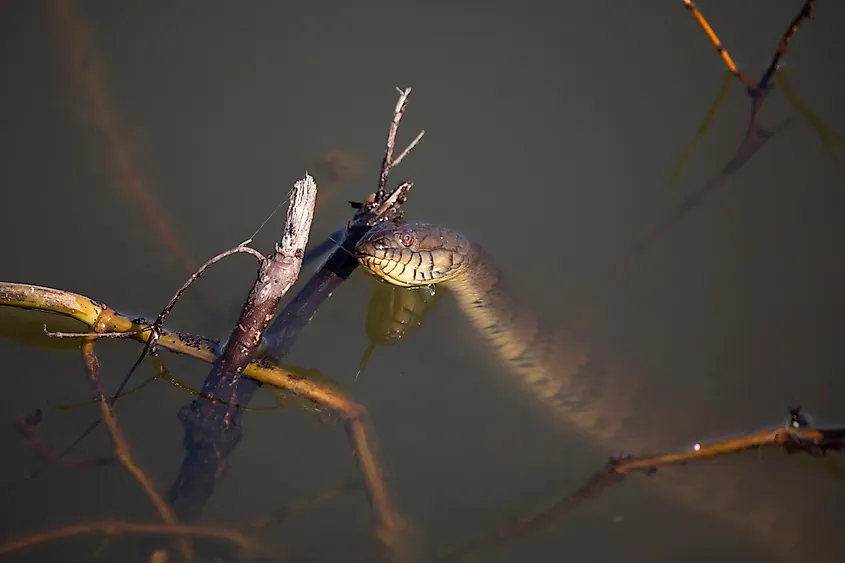
The White River rises in the Boston Mountains of northwestern Arkansas, where it flows northeast and briefly enters Missouri before reentering Arkansas. From there, it flows south and joins the Arkansas River near its confluence with the Mississippi River after a total course of 685 miles. Much of the White River is entrenched in narrow gorges. When it emerges in Newport, the river meanders through abandoned channels and swampland.
The Diamondback Watersnake (Nerodia rhombifer) prefers wetland habitats, including swamps, as well as sloughs, marshes, oxbow lakes, rivers, and streams. They often bask on tree branches that overhang water, dropping off into the water when startled. Their diet consists primarily of other aquatic animals, including frogs, toads, tadpoles, small fish, minnows, salamanders, and crayfish. They are diurnal hunters, feeding primarily during daylight hours.
Ouachita River
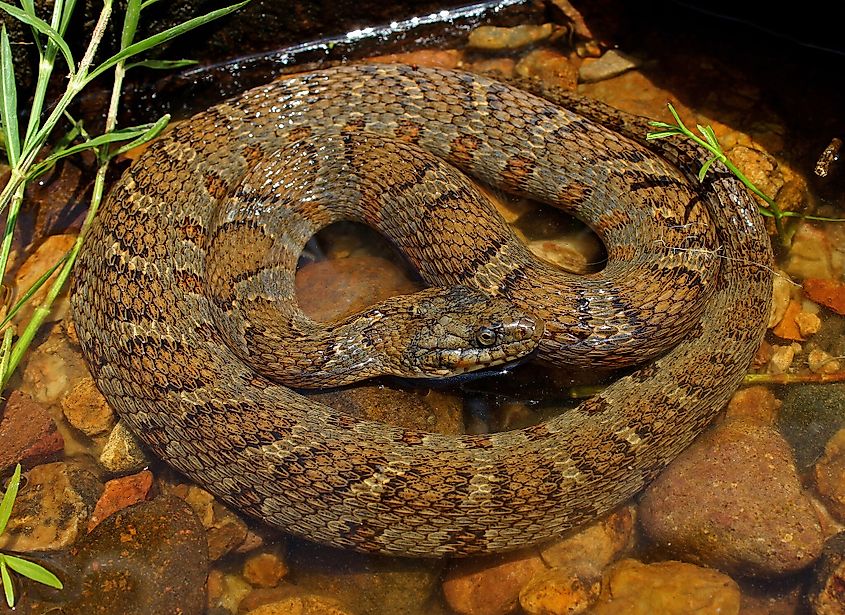
The Ouachita River rises in the Ouachita Mountains in west-central Arkansas, flowing for a total course of 605 miles. Its drainage basin spans 25,000 square miles, with most of it lying in the upper Coastal Plain of Arkansas and Louisiana and in the alluvial valley of the Mississippi River. In an effort to enact flood control, several manmade lakes were created along the Ouachita River: Lake Hamilton, Lake Catherine, and the largest lake entirely within Arkansas, Lake Ouachita. The river flows into the lake, and the lake is drained by the river downstream.
The Midland Watersnake (Nerodia sipedon pleuralis) commonly inhabits streams in the Interior Highlands, with a patchy distribution in the South Central Plains and Mississippi Alluvial Plain, existing only in the extreme northwest of Arkansas. It has been seen along the Ouachita River, often in Lake Ouachita.
Saline River
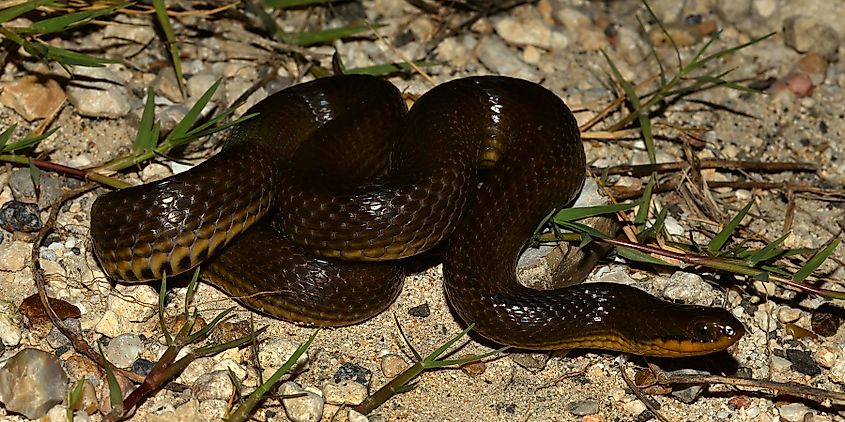
The Saline River is a tributary of the Ouachita River, and is the last major undammed stream in the entire Ouachita Mountain drainage. The Saline River plays a crucial role in the local environment, contributing to the area's biodiversity. The banks of the river are lined by dense forests that support a wide range of plants and animals, including snakes.
The Gulf Swampsnake (Liodytes rigida sinicola) occurs throughout the South Central Plains, predominantly along river and stream bottomlands, including the Saline River. It is a small, harmless, aquatic species of snake, often found in slow-moving bodies of water, bogs, swamps, and ditches. These snakes are rarely encountered away from the water, but they can sometimes be found under logs or debris near water, hunting in crayfish burrows, or crossing roads during or after heavy rains.
Cache River
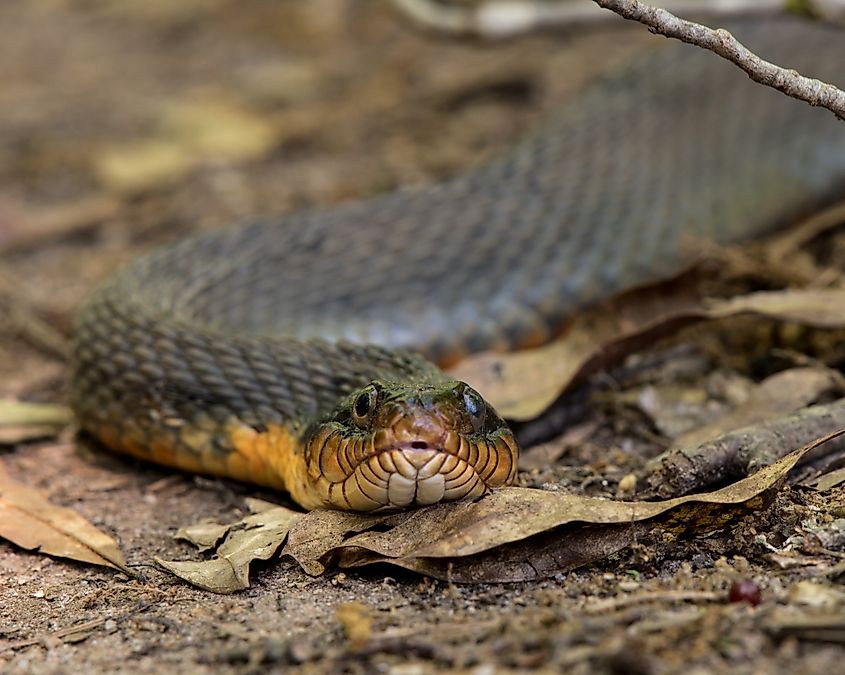
The Cache River rises near the Arkansas-Missouri border at the confluence of a few agricultural ditches and flows southwest through Arkansas until it empties into the White River. When combined with the lower White River ecosystem in eastern Arkansas, it represents the largest remaining tract of contiguous bottomland hardwood forest in North America. From its beginnings in southern Missouri, the Cache becomes a cypress-lined, natural wonder in Jackson County.
Studies have found that 14 species of snakes were observed in the Cache River Basin. The Plain-bellied Watersnake (Nerodia erythrogaster) was the only species of watersnake consistently found across the entire Cache River Corridor, specifically in the Lower Cache River, which failed to meet the habitat requirements of other watersnake species. Plain Bellied Watersnakes can be found in sluggish water habitats of swamps, oxbow lakes, sloughs, rivers, and streams, where they will eat fish, amphibians, and crayfish.
Arkansas Snake-Filled Rivers
Arkansas's expansive river systems and waterways offer an abundance of outdoor recreational activities, both on and near the river. While most of the species of snakes found in Arkansas are nonvenomous, the most common venomous snake that can be encountered in the water is the Cottonmouth. However, while cottonmouths are territorial, they are more likely to emit a foul odor rather than chase or attack humans. Nonetheless, all snakes should be given a wide berth if you are unable to identify them confidently.
